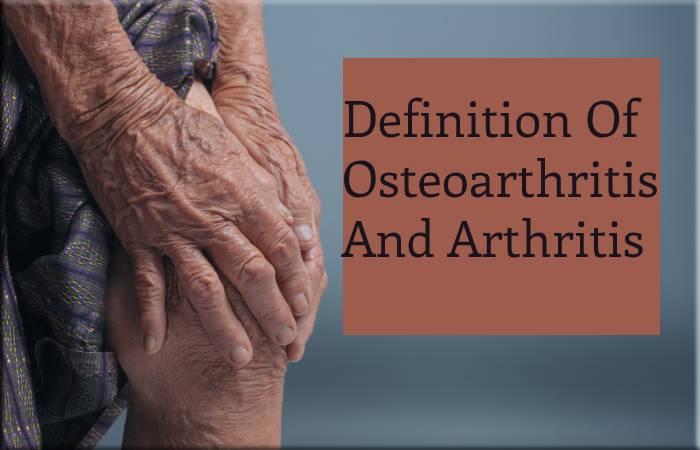Rheumatic disease such as osteoarthritis and arthritis refer to that affect the joints and that are treated by rheumatologists.
Although they have points in stock, at the bottom they are very different entities in terms of causes, symptoms, prognosis, and other aspects.
Two rheumatologists give us the keys to better understand them and know how to distinguish them.
The first noticeable difference is that osteoarthritis is a single disease, but with different forms depending on the location: hand, knee, hip, lumbar, cervical.
In contrast, the word arthritis not usually pronounced isolated because.
It does not apply to a single pathology but is the common denominator of very diverse diseases.
Such as rheumatoid arthritis, psoriatic arthritis, juvenile idiopathic arthritis, ankylosing spondylitis, microcrystalline arthritis (including gout ), infectious arthritis.
It can also be the symptom of other rheumatic diseases.
Such as systemic lupus erythematosus, says Montserrat Romera Baurés, a rheumatologist at the Bellvitge University Hospital (Barcelona) and spokesperson for the Spanish Society of Rheumatology (SER).
On the other hand, osteoarthritis must be understood.
According to Ana Sánchez Atrio, head of the Rheumatology Section of the Príncipe de Asturias University Hospital, in Alcalá de Henares (Madrid), as a result that reached in many ways.
The fundamental is ” aging, but there are other causes, “such as osteoarthritis that appears years after a joint fracture.
Table of Contents
Definition Of Osteoarthritis And Arthritis

Osteoarthritis is a chronic rheumatic disease that damages the articular cartilage.
It causes pain, stiffness, and functional disability, which prevents regular movements such as closing the hand, climbing stairs, or walking.
The term arthritis (arth: joint, itis: inflammation) means inflammation of a joint. There are different types of arthritis and with totally different mechanisms, insists Romera.
What they all have in common is joint pain and swelling, which is usually accompanied by redness of the skin.
To recap, in arthritis, the main feature is inflammation, and in osteoarthritis, it is worn.
Two diseases occur with pain, sometimes swelling and stiffness, but in osteoarthritis, the pain is mechanical; that is, it triggered by movements and improved with rest.
Pain, Inflammation And Other Symptoms

In pathologies such as rheumatoid arthritis, which is the most common inflammatory joint disease, just the opposite happens: pain tends to worsen with rest.
When the person gets up and starts walking, it hurts less, as if it were ‘greased, Sánchez Atrio explains.
Another characteristic of this ailment is morning stiffness, especially in the joints of the hands and feet.
In spondyloarthritis, the pain and stiffness are manifested, especially in the lumbar spine, and also improves with movement.
The rheumatologist at the Príncipe de Asturias Hospital stresses the importance of recognizing these symptoms to see the primary care physician as soon as possible, who will assess the referral to the specialist.
Early diagnosis is crucial because the prognosis is very different if the treatment five years before or after when there are already sequelae.
Causes And Risk Factors Of Rheumatic Disease -Osteoarthritis And Arthritis
Romera points out that osteoarthritis can be “primary (the most frequent and of unknown cause) or secondary to other diseases.
Risk factors include age (cartilage undergoes changes over time and becomes less elastic), sex (it is more common in women), a traumatic history, sedentary lifestyle, overweight, and obesity.
Fatness is an essential adjustable threat factor in osteoarthritis. Overweight men and women are 4-5 times more at the hazard of developing osteoarthritis of the knee, he says.
This rheumatic disease is not hereditary, but it does have a genetic risk component that long with other factors, it can make it appear more quickly in subjects with a family history.
Obesity and lack of physical exercise are not as determined in the appearance of inflammatory rheumatic diseases, but their progression and prognosis. The age of onset is highly variable.
Thus, it often said that rheumatoid arthritis begins between the fourth and fifth decades of life, although Sánchez Atrio clarifies that many cases diagnosed earlier.
In lupus, it arises even more first: in the second or third decade. When it comes to sex, there are also some divergences. For example, rheumatoid arthritis is much more common in women, but spondyloarthritis is more common in men.
Another key risk factor is smoking. Lately, multiple studies highlight the role of tobacco as a possible triggering factor, prognosis, and response to inflammatory arthritis treatments, highlights Romera.
Can They Prevented?
In light of the risk mentioned above factors. It seems clear that the margin for prevention through a healthy lifestyle – healthy eating and physical activity. And also especially much more significant in the case of osteoarthritis.
However, quitting smoking could act as a brake against diseases such as rheumatoid arthritis.
Tobacco increases the risk of suffering the disease in people with genetic predisposition. And also worsens the prognosis,” summarizes Sánchez Atrio.
Very Different Treatments For Rheumatic Disease
The treatments for arthritis and osteoarthritis are different.
At hand is no remedial treatment for osteoarthritis, but a combination of drugs, physical activity, joint protection, avoiding obesity.
And physical or occupational therapy can improve the quality of life of patients, says Romera.
Analgesics, anti-inflammatories, disease-modifying drugs, and infiltrations used for pharmacological treatment.
There is a growing sign of the role that nutrition can have in the management of this disease.
The Mediterranean diet can have a protective effect due to its anti-inflammatory properties. And its effect on obesity,” adds the specialist.
Therapies for arthritis are highly variable and tend to individualize. The greatest significant thing to carry out an etiological diagnosis as early as possible for an adequate treatment. So that will be different depending on the rheumatic disease in question, ” highlights Romera.
Among the treatments to alleviate the symptoms of these pathologist “are painkillers, anti-inflammatories, and glucocorticoids,” he specifies.
However, in long time, it is necessary to aspire more ambitious goals, after a specific diagnosis, specific treatment should start. And modifying the disease-as in inflammatory arthritis or gouty arthritis-, or antibiotic therapy in case of infectious arthritis.
The objective is to achieve control of the disease and avoid joint destruction.



